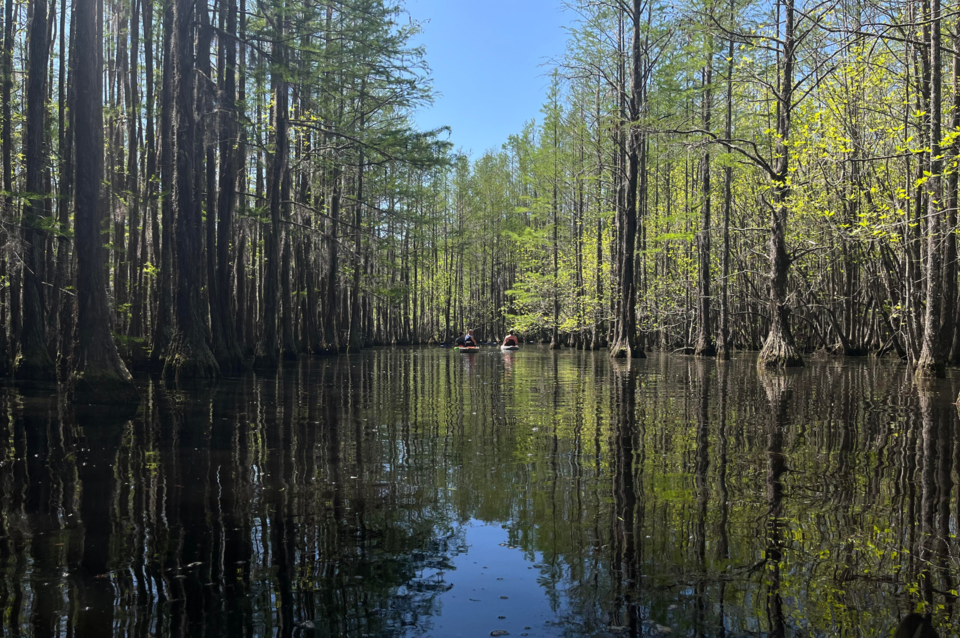Just a stone’s throw away from Statesboro in Twin City, Georgia, lies a vast lake teeming with life. It’s home to many small critters as well as the large, twisting trees that sprout from the lake’s depths.
The natural beauty of the park guides the guests’ eyes, with the spots of sunlight shining in through the trees, the gentle touch of greenery on the branches, and the beautiful yet deceiving Spanish Moss hanging low.
This beautiful expanse is George L. Smith State Park—a 412-acre lake established in 1975 and named after George Leon Smith, II, who was a speaker of the Georgia House of Representatives until his death in 1973. According to a board located inside the state park’s gift shop, Smith was a key part of establishing this property, which was named in his honor.
George L. Smith State Park offers multiple activities, one of which is kayaking.
Kayaking on the Water of George L. Smith State Park
Three routes can be taken when kayaking: the yellow, red, and blue route. All three routes are marked on the maps provided by the workers at the park.
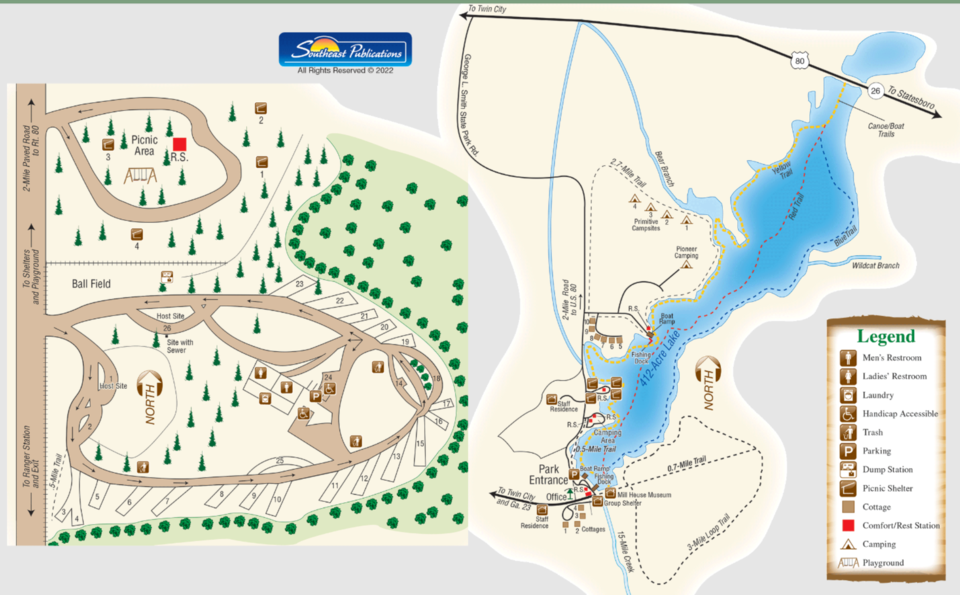
The red route takes you out into the middle of the lake, where you can admire the water’s reflective surface with minimal trees blocking your path. The yellow and blue routes take a tighter approach, with the trees within touching distance throughout nearly every minute of the adventure.
Along the yellow and blue routes, where the trees close in around visitors, the reflections on the water become almost surreal—far more striking than the open water views found on the red route.
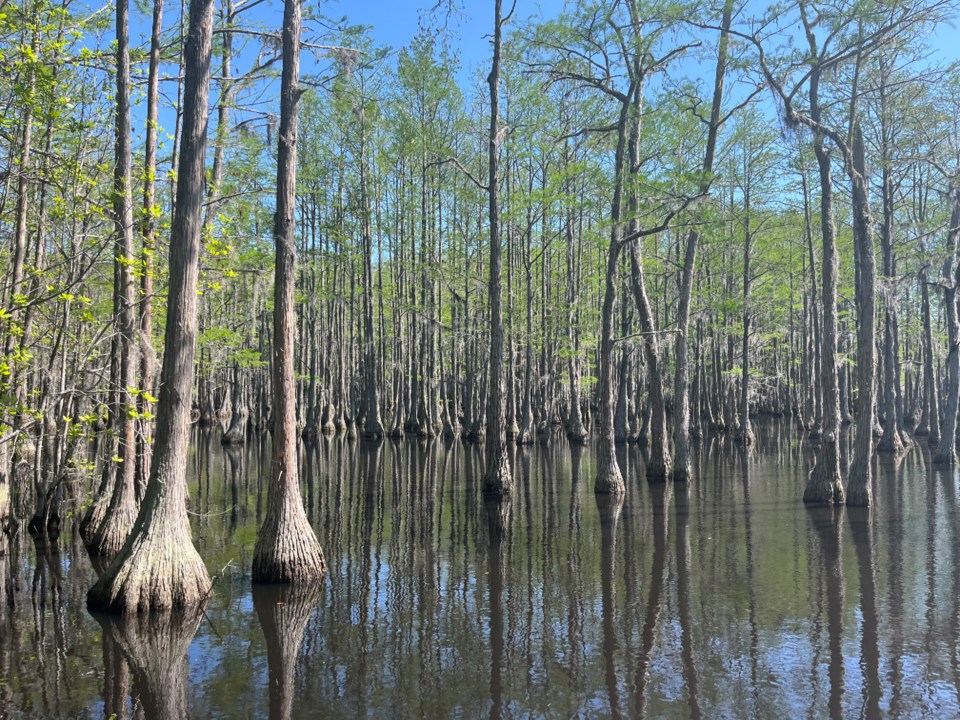
Both routes are marked with red or yellow signs, depending on which route is taken. Dragonflies zip by, moving between the trees and occasionally landing on guests’ feet, accompanying them through their trip.
Throughout the journey, three harmless Eastern Indigo Snakes were spotted; two were wrapped comfortably around tree branches, enjoying the warm and sunny weather, while the other was swimming across the lake in the distance.
Eastern Indigo Snakes are a protected non-venomous species; they are large, glossy-black snakes with smooth, shiny scales. On a board posted at the entrance of the museum, it’s recommended to assume that any snakes lacking patterns and having a black coloration are possibly Indigo Snakes.
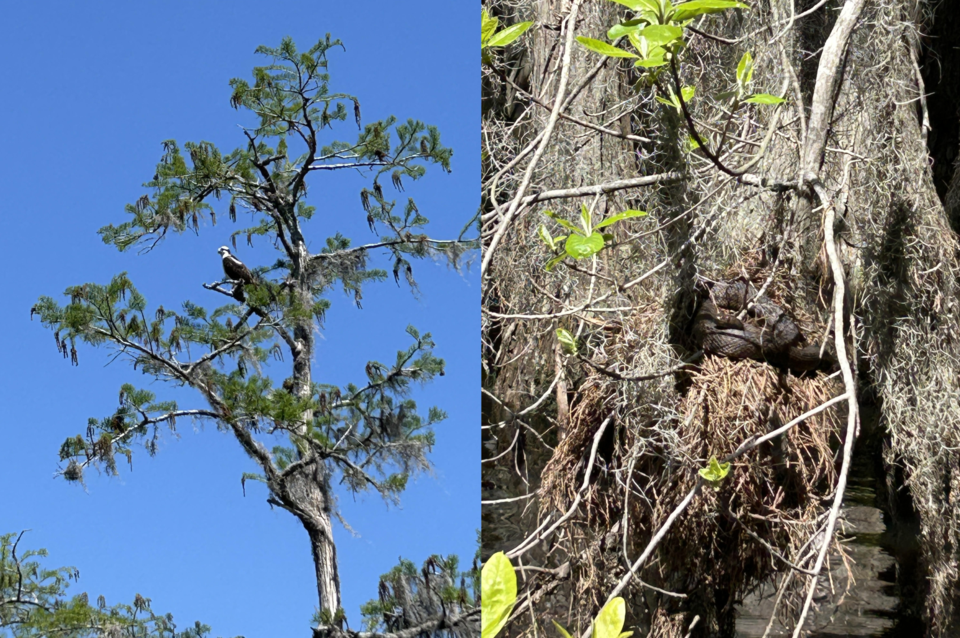
Two Ospreys were spotted in the middle of the lake. One was found in its nest, sitting atop a tall tree, and the other was spotted watching us from a distance and ensuring we meant no harm. The white stripe on the side of its face was the tell-tale sign we needed to determine which type of bird of prey it was.
Activities and Species Found Here
George L. Smith State Park offers more than just kayaking; guests can also canoe, boat, geocache, hike, bike, picnic, fish, and bird. There are also ten cottages available to rent for camping, one conference room, one pioneer campground, four picnic shelters, and 24 tent, trailer and RV campsites.
The park is home to multiple small critters, including but not exclusive to gopher tortoises, alligators, eastern indigo snakes, crappies and white egrets. Information on these animals is listed on a board located inside their museum.
The History of George L. Smith State Park
As if the beauty of this park wasn’t enough, it also has an extensive history behind it; George L. Smith State Park is home to the refurbished Parrish Mill and Pond, a combination gristmill, saw mill, covered bridge and dam built in 1880, which guests can see by taking a walk through the museum.
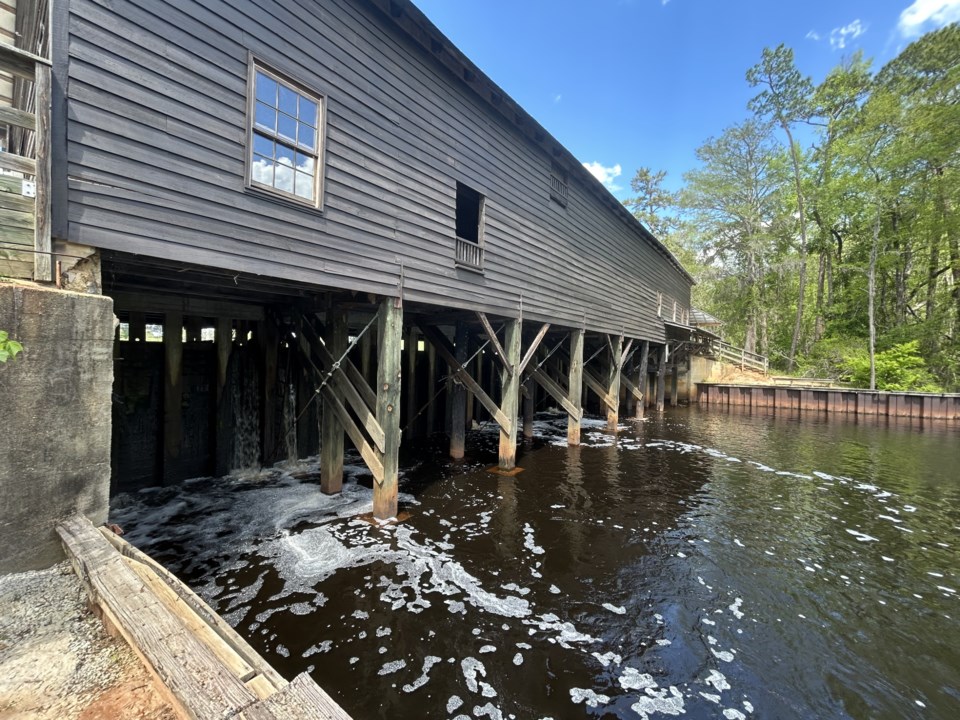
The mills are sectioned off by glass, separating the artifacts from the guests while providing boards on the inside that include information about the mills and their uses. Visitors can walk down to the dam, which is positioned under the museum, and listen to the roar of the water as it passes through the stones.
Only 40 minutes from Statesboro, Georgia, this state park makes for an amazing day trip, especially with its deep-rooted history in the late 1800s, abundance of species living here, the numerous activities available to take part in and the natural beauty of the park.
Please click here to learn more about George L. Smith State Park.

